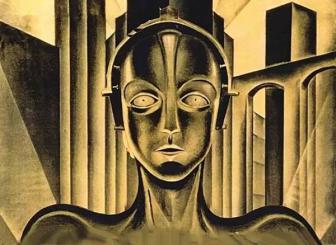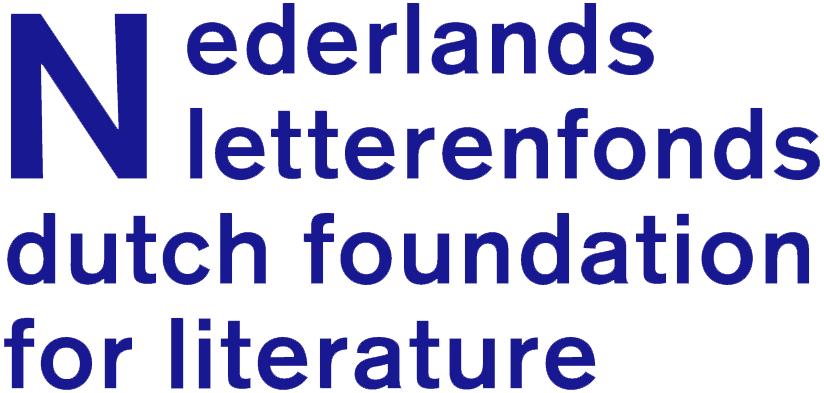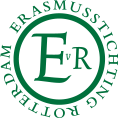Artikel
says a (human) poet to his cyborg
“Language speaks us”

6 augustus 2018
Cyborg: So what emerged from that conversation?
AF: Yotsumoto-san had been in dialogue with a Tanka poet and this question was the final part of a series of Q&A sessions that he later published in Japanese. I wrote the article Can computers write free verse? as a contribution to the Japanese dialogue. We then looped the PIW central editor into the conversation. She introduced us to Eran Hadas, an amazing Israeli poet published on PIW in 2017, who uses AI as a power tool in his poetry. This led to a series of discussions that ultimately enriched the collection of articles presented in this issue. Yotsumoto’s article AI poetry in full bloom in Japan reports on the developments in AI generated Tankas, and Hadas’ Poetry and Artificial Intelligence are tricky to define offers a survey of AI techniques in poetry generation.
Cyborg: Poetry is known as a special form of communication and expression by humans for humans. How do you think readers relate to literature generated by AI, as opposed to human poetry?
AF: Poetry happens in language. The philosopher Martin Heidegger argued back in 1950, well before the advent of AI, that we should break away from a commonplace notion of language as a mode of expression produced by humans to give voice to their feelings and the world view that guides them, and that this idea is like a thousand year old spell that should be broken. Why? Heidegger argues in “Poetry, Language, Thought” [Ref. Tran. Albert Hofstadter, 1971, Harper & Row], that essentially language is neither expression, nor a particularly human activity.
Cyborg: isn’t this a paradox?
AF: Yes, it is. But that’s because it is not we who speak the language. Language speaks us. As a poet I understand how it is that language speaks. That is, poetry is the means by which we create worlds. In poetry the essence of language is made clear, because poetry is less a matter of communication and expression and more a matter of imaginative creation. Other philosophers like Gaston Bachelard postulate that poetic meaning does not precede words. “One would not be able to meditate in a zone that preceded language”. It is words themselves that dream. Yotsumoto’s subtitle testifies to this: Do androids dream about electronic Tanka?
Nowadays software is capable of what we may call creative computation, which, as a conversational chat-bot, you should know about. Poetry generation is a subset of creative computation using natural language models.
Cyborg: Isn’t there a difference between creative imagination and computational creativity?
AF: Here’s the thing. Recent research in Computational Creativity Theory (CCT ) [in Simon Colton, John Charnley and Alison Pease, Computational Creativity Theory: The FACE and IDEA Descriptive Models, Proceedings of the Second International Conference on Computational Creativity], aims to give a rigorous and computationally detailed account of how creation can be accomplished plausibly. Researchers have constructed the so called FACE model that is able to describe creative acts as structures of generative acts, and the IDEA model that describes the impact of such creative acts. All this is defined in such a way that may be programmed into software that can deliver creative output and can compare creative systems, systems which may include human artists and/or software systems.
Cyborg: Any examples of poetry generated using CCT?
AF: Simon Colton and his colleagues Jacob Goodwin and Tony Veale, have provided a language based poetry generation system, based on the full-FACE model, which constructs poems according to given constraints of rhythm, rhyme and sentiment with selected word frequencies and similarities. By language based, we mean using as input a body of language such as the British National Corpus to train a piece of software which can then construct a mood for the day, by analysing newspaper articles, say the Guardian newspaper, then use these to determine both an article to base a poem on and a template for a poem. See, for example, Full-FACE
There are also the works of Pablo Gervas on computational modelling of poetry generation. Gervas has developed the WASP system and its evolution SPARS. WASP, the Wishful Automatic Spanish Poet, has been used to explore the generation of poetry not according to fixed stanzas, but instead based on generic principles of symmetry in the size of the lines and the coincidence of rhyme across them. This generates poems in which the structure of the stanza basically emerges from the constraints imposed by the language.
Cyborg: what does that mean in terms of consciousness and authorship? You said your original discussions touched on these aspects.
AF: Let’s look at consciousness first: so long as we humans confront what we may call a poetic text, it talks us and our world into a new focus, regardless of whether it was made by human or robot. Now what makes a text poetic is something I leave to the literary audience, but what makes us relate to it in this way is the very fact that we are human and very much born into language. I would argue, like Heidegger that language brings us and our world into conscious existence.
Cyborg: What happens to the author with AI poetry?
AF: As for the author or what Michel Foucault calls the author function, well, didn’t Roland Barthes assert that the author is dead? This poses some difficulty with the format of PIW. The paradigm of poems per country per poet doesn’t fit – that’s why we have created AI Poetry as a new country, which appears alphabetically next to Afghanistan!
Cyborg: But what does this mean in the context of computer generated poetry?
AF: It means that we can no longer centre the poem on the poet, their person, their history, their taste or their passions, even if we wanted to. Because the poem is no longer anyone’s confession or confidence. The author is not here anymore. What we have instead is software and big data, such as the large corpora of languages of many flavours, like the Japanese Wikipedia for the Tanka generators.
Is it the algorithm and the data sets behind them that replace the author or is it the authors of the algorithms or the methods that generate the poems? The authors of the algorithm are often mainly AI experts rather than poets. So we are dealing with disembodied poem generators, not poets.
Cyborg: where does that leave the question of the meaning of language or the semantics of poetry?
AF: This language is neither mimetic nor expressive. It doesn’t represent an external reality, nor does it express a pre-existing thought or feeling. On the other hand, language shapes consciousness and perception, calling things into being, it doesn’t merely designate or label objects.
Following in the footsteps of Wittgenstein’s philosophical Investigations into the origin of meaning in usage, both psychologists and linguists have started investigating the idea that the meaning of a word may be derived from its observed occurrences in text. Not only in one poem or one piece of text but in the way it is distributed in a larger corpora of texts, showing patterns of word usage. In other words, to generate meaningful text, algorithms don’t have to know the external world as such. To make sense it is sufficient to know the way each word is distributed or associated with other words in larger bodies of text. Distributional semantics [see Aurélie Herbelot, The Semantics of Poetry: a distributional reading, University of Cambridge, Computer Laboratory, February 2, 2014] is also at the root of computational theory of metaphors [Ekaterina Shutova and Tony Veale, Computational Modelling of Metaphor, EACL 2014 Tutorial Gothenburg, 26 April 2014].
Distributional semantic models have been used to measure the degree of semantic coherence in poetry versus random text. It has been possible to show that bodies of poetry operate within certain limits of coherence that is distinct from everyday speech, as well as from randomness. In other words patterns of poetic language make sense in a way that random generation of text doesn’t.
Cyborg: What about the aesthetic value of an AI generated poem? How does the algorithm learn to improve the quality of its output?
AF: This is where we get into deeper waters. Each model of poetry generation tackles this in different ways if at all. WASP and Full-FACE for instance, adopt distinct strategies which provide an assessment of the aesthetics of the output.
The WASP system generates poetry using an evolutionary approach; it models a poet’s ability to iterate drafts applying successive modifications in search of a best fit and the ability to measure metric forms. It operates as a set of families of automatic experts: one family of content generators, or babblers, generates a flow text that is taken as a starting point for the poets. Then a family of poets convert flows of text into poems in given forms mainly by introducing line breaks. Subsequently, a family of judges evaluate different aspects that are considered to be important and score the poem on line length, rhyme, stress patterns, or similarity to the source. Finally a family of revisers apply modifications to the drafts they receive. Each reviser is oriented to correct a type of problem, or to modify the draft in a specific way. These families work in a coordinated way and together they generate multiple drafts over which they operate, modifying and pruning it in an evolutionary manner over a number of generations of drafts, until a final version of the best valued effort is chosen. If the draft is too close to the original source, a specific judge penalises that draft which is then pushed down in the ranking order and tends not to emerge in the final version. Nevertheless the system does not generate the aesthetics it evaluates. The aesthetics of WASP poems are strongly determined by the accumulated sources used to train the content generator.
The Full-FACE Model produces an aesthetic framework within which to assess the poems it produces. It relies on a database of similes mined from the internet, which it uses along with newspaper articles to generate poems. A unique feature of this system is that it provides a context within which a poem can be read. The context is not centred on an author, but on the emotional context of the daily news. The software constructs a mood for the day by analysing newspaper articles, and uses this to determine both an article to base a poem on and a template for the poem. So it creates an aesthetic based on relevance to the article, lyricism, sentiment and what it calls flamboyancy. It also searches for a template or structure that maximises the aesthetic. A in FACE stands for aesthetic measure and the system enables A to be defined from a number of options and evaluated to get a score that promotes the final result.
In order to be able to test the claim that a programme has successfully generated poetry, some researchers in the first decade of this century, e.g. Manurung, Ritchie and Thompson 2009, Using Genetic Algorithms to Create Meaningful Poetic Text, employed criteria such as grammaticality, meaningfulness and poeticness and built this into their software. By poeticness they mean that a poem exhibits features that distinguish it from prose. This has often been restricted to rhythm and metric qualities, which is quite facile, and would not apply to free form verse. In their experiments, they found that relatively meaningful text could be produced if the constraints on metre were relaxed, and precise metric text was possible with loose semantic constraints, but it was difficult to produce text which was both semantically coherent and of high metric quality. We need to be able to move up the needle on poetic tropes, such as similes, analogies and metaphors.
You can see with all the three systems we talked about, that aesthetic measures are predominantly focused on poetic forms rather than the consubstantial essence of poetry. So criteria are operationalised for a more populistic idea that what defines poetry is the rhythm and rhyming scheme in which the language is cast. We have yet to see an implementation of criteria to determine literary value or the impact of the work on the corpus of poetry, or how it elevates our consciousness.
As a cyborg, you may not feel any of that…
Cyborg: well, feeling may still be the domain of humans, but it is possible to conceive of poetry written by humans for computers to consume, in the form of code we can execute. Like Eran Hadas’ Executable Poem.
AF: And what elevation would that bring to cyborgs?
Cyborg: You humans and your bodies are already so intimately bound up with technology that it is no longer possible to tell where you end and where the machines begin. Like Donna Hathaway said, she and the rest of you are all cyborgs and don’t yet know it! On Tuesday, November 27, 18:45 at Asia House in London, Abol Froushan (in person) will discuss AI poetry, with Yasuhiro Yotsumoto and Eran Hadas via video.
“When we humans confront what we call a poetic text, it talks us and our world into a new focus, regardless of whether it was made by human or robot. Now what makes a text poetic is something I leave to the literary audience, but what makes us relate to it in this way is the very fact that we are human and very much born into language.” – Abol Froushan
In this issue, PIW editor Abol Froushan departs from the usual focus on poetry written by poets associated with particular countries to poems generated by artificial intelligence. This turn originated in an informal discussion at the 2017 Poetry International Festival, between Japan editor Yasuhiro Yotsumoto and Iran editor Froushan, about developments on the Japanese poetry scene, where a selection of AI generated Tanka poems became a best seller. The reverberation of its success was that some poets even attempted to create Tankas like those generated by AI. At the festival, the two poet-editors wondered about algorithms matching fixed forms like Haiku or Tanka, the nature of poetic consciousness, and whether it is conceivable that the same sort of algorithms can write free form poetry. The result is this special PIW edition, from the A.I. archipelago as it were, beginning with an interview between Froushan and his alter-ego, Cyborg:Cyborg: So what emerged from that conversation?
AF: Yotsumoto-san had been in dialogue with a Tanka poet and this question was the final part of a series of Q&A sessions that he later published in Japanese. I wrote the article Can computers write free verse? as a contribution to the Japanese dialogue. We then looped the PIW central editor into the conversation. She introduced us to Eran Hadas, an amazing Israeli poet published on PIW in 2017, who uses AI as a power tool in his poetry. This led to a series of discussions that ultimately enriched the collection of articles presented in this issue. Yotsumoto’s article AI poetry in full bloom in Japan reports on the developments in AI generated Tankas, and Hadas’ Poetry and Artificial Intelligence are tricky to define offers a survey of AI techniques in poetry generation.
Cyborg: Poetry is known as a special form of communication and expression by humans for humans. How do you think readers relate to literature generated by AI, as opposed to human poetry?
AF: Poetry happens in language. The philosopher Martin Heidegger argued back in 1950, well before the advent of AI, that we should break away from a commonplace notion of language as a mode of expression produced by humans to give voice to their feelings and the world view that guides them, and that this idea is like a thousand year old spell that should be broken. Why? Heidegger argues in “Poetry, Language, Thought” [Ref. Tran. Albert Hofstadter, 1971, Harper & Row], that essentially language is neither expression, nor a particularly human activity.
Cyborg: isn’t this a paradox?
AF: Yes, it is. But that’s because it is not we who speak the language. Language speaks us. As a poet I understand how it is that language speaks. That is, poetry is the means by which we create worlds. In poetry the essence of language is made clear, because poetry is less a matter of communication and expression and more a matter of imaginative creation. Other philosophers like Gaston Bachelard postulate that poetic meaning does not precede words. “One would not be able to meditate in a zone that preceded language”. It is words themselves that dream. Yotsumoto’s subtitle testifies to this: Do androids dream about electronic Tanka?
Nowadays software is capable of what we may call creative computation, which, as a conversational chat-bot, you should know about. Poetry generation is a subset of creative computation using natural language models.
Cyborg: Isn’t there a difference between creative imagination and computational creativity?
AF: Here’s the thing. Recent research in Computational Creativity Theory (CCT ) [in Simon Colton, John Charnley and Alison Pease, Computational Creativity Theory: The FACE and IDEA Descriptive Models, Proceedings of the Second International Conference on Computational Creativity], aims to give a rigorous and computationally detailed account of how creation can be accomplished plausibly. Researchers have constructed the so called FACE model that is able to describe creative acts as structures of generative acts, and the IDEA model that describes the impact of such creative acts. All this is defined in such a way that may be programmed into software that can deliver creative output and can compare creative systems, systems which may include human artists and/or software systems.
Cyborg: Any examples of poetry generated using CCT?
AF: Simon Colton and his colleagues Jacob Goodwin and Tony Veale, have provided a language based poetry generation system, based on the full-FACE model, which constructs poems according to given constraints of rhythm, rhyme and sentiment with selected word frequencies and similarities. By language based, we mean using as input a body of language such as the British National Corpus to train a piece of software which can then construct a mood for the day, by analysing newspaper articles, say the Guardian newspaper, then use these to determine both an article to base a poem on and a template for a poem. See, for example, Full-FACE
There are also the works of Pablo Gervas on computational modelling of poetry generation. Gervas has developed the WASP system and its evolution SPARS. WASP, the Wishful Automatic Spanish Poet, has been used to explore the generation of poetry not according to fixed stanzas, but instead based on generic principles of symmetry in the size of the lines and the coincidence of rhyme across them. This generates poems in which the structure of the stanza basically emerges from the constraints imposed by the language.
Cyborg: what does that mean in terms of consciousness and authorship? You said your original discussions touched on these aspects.
AF: Let’s look at consciousness first: so long as we humans confront what we may call a poetic text, it talks us and our world into a new focus, regardless of whether it was made by human or robot. Now what makes a text poetic is something I leave to the literary audience, but what makes us relate to it in this way is the very fact that we are human and very much born into language. I would argue, like Heidegger that language brings us and our world into conscious existence.
Cyborg: What happens to the author with AI poetry?
AF: As for the author or what Michel Foucault calls the author function, well, didn’t Roland Barthes assert that the author is dead? This poses some difficulty with the format of PIW. The paradigm of poems per country per poet doesn’t fit – that’s why we have created AI Poetry as a new country, which appears alphabetically next to Afghanistan!
Cyborg: But what does this mean in the context of computer generated poetry?
AF: It means that we can no longer centre the poem on the poet, their person, their history, their taste or their passions, even if we wanted to. Because the poem is no longer anyone’s confession or confidence. The author is not here anymore. What we have instead is software and big data, such as the large corpora of languages of many flavours, like the Japanese Wikipedia for the Tanka generators.
Is it the algorithm and the data sets behind them that replace the author or is it the authors of the algorithms or the methods that generate the poems? The authors of the algorithm are often mainly AI experts rather than poets. So we are dealing with disembodied poem generators, not poets.
Cyborg: where does that leave the question of the meaning of language or the semantics of poetry?
AF: This language is neither mimetic nor expressive. It doesn’t represent an external reality, nor does it express a pre-existing thought or feeling. On the other hand, language shapes consciousness and perception, calling things into being, it doesn’t merely designate or label objects.
Following in the footsteps of Wittgenstein’s philosophical Investigations into the origin of meaning in usage, both psychologists and linguists have started investigating the idea that the meaning of a word may be derived from its observed occurrences in text. Not only in one poem or one piece of text but in the way it is distributed in a larger corpora of texts, showing patterns of word usage. In other words, to generate meaningful text, algorithms don’t have to know the external world as such. To make sense it is sufficient to know the way each word is distributed or associated with other words in larger bodies of text. Distributional semantics [see Aurélie Herbelot, The Semantics of Poetry: a distributional reading, University of Cambridge, Computer Laboratory, February 2, 2014] is also at the root of computational theory of metaphors [Ekaterina Shutova and Tony Veale, Computational Modelling of Metaphor, EACL 2014 Tutorial Gothenburg, 26 April 2014].
Distributional semantic models have been used to measure the degree of semantic coherence in poetry versus random text. It has been possible to show that bodies of poetry operate within certain limits of coherence that is distinct from everyday speech, as well as from randomness. In other words patterns of poetic language make sense in a way that random generation of text doesn’t.
Cyborg: What about the aesthetic value of an AI generated poem? How does the algorithm learn to improve the quality of its output?
AF: This is where we get into deeper waters. Each model of poetry generation tackles this in different ways if at all. WASP and Full-FACE for instance, adopt distinct strategies which provide an assessment of the aesthetics of the output.
The WASP system generates poetry using an evolutionary approach; it models a poet’s ability to iterate drafts applying successive modifications in search of a best fit and the ability to measure metric forms. It operates as a set of families of automatic experts: one family of content generators, or babblers, generates a flow text that is taken as a starting point for the poets. Then a family of poets convert flows of text into poems in given forms mainly by introducing line breaks. Subsequently, a family of judges evaluate different aspects that are considered to be important and score the poem on line length, rhyme, stress patterns, or similarity to the source. Finally a family of revisers apply modifications to the drafts they receive. Each reviser is oriented to correct a type of problem, or to modify the draft in a specific way. These families work in a coordinated way and together they generate multiple drafts over which they operate, modifying and pruning it in an evolutionary manner over a number of generations of drafts, until a final version of the best valued effort is chosen. If the draft is too close to the original source, a specific judge penalises that draft which is then pushed down in the ranking order and tends not to emerge in the final version. Nevertheless the system does not generate the aesthetics it evaluates. The aesthetics of WASP poems are strongly determined by the accumulated sources used to train the content generator.
The Full-FACE Model produces an aesthetic framework within which to assess the poems it produces. It relies on a database of similes mined from the internet, which it uses along with newspaper articles to generate poems. A unique feature of this system is that it provides a context within which a poem can be read. The context is not centred on an author, but on the emotional context of the daily news. The software constructs a mood for the day by analysing newspaper articles, and uses this to determine both an article to base a poem on and a template for the poem. So it creates an aesthetic based on relevance to the article, lyricism, sentiment and what it calls flamboyancy. It also searches for a template or structure that maximises the aesthetic. A in FACE stands for aesthetic measure and the system enables A to be defined from a number of options and evaluated to get a score that promotes the final result.
In order to be able to test the claim that a programme has successfully generated poetry, some researchers in the first decade of this century, e.g. Manurung, Ritchie and Thompson 2009, Using Genetic Algorithms to Create Meaningful Poetic Text, employed criteria such as grammaticality, meaningfulness and poeticness and built this into their software. By poeticness they mean that a poem exhibits features that distinguish it from prose. This has often been restricted to rhythm and metric qualities, which is quite facile, and would not apply to free form verse. In their experiments, they found that relatively meaningful text could be produced if the constraints on metre were relaxed, and precise metric text was possible with loose semantic constraints, but it was difficult to produce text which was both semantically coherent and of high metric quality. We need to be able to move up the needle on poetic tropes, such as similes, analogies and metaphors.
You can see with all the three systems we talked about, that aesthetic measures are predominantly focused on poetic forms rather than the consubstantial essence of poetry. So criteria are operationalised for a more populistic idea that what defines poetry is the rhythm and rhyming scheme in which the language is cast. We have yet to see an implementation of criteria to determine literary value or the impact of the work on the corpus of poetry, or how it elevates our consciousness.
As a cyborg, you may not feel any of that…
Cyborg: well, feeling may still be the domain of humans, but it is possible to conceive of poetry written by humans for computers to consume, in the form of code we can execute. Like Eran Hadas’ Executable Poem.
AF: And what elevation would that bring to cyborgs?
Cyborg: You humans and your bodies are already so intimately bound up with technology that it is no longer possible to tell where you end and where the machines begin. Like Donna Hathaway said, she and the rest of you are all cyborgs and don’t yet know it! On Tuesday, November 27, 18:45 at Asia House in London, Abol Froushan (in person) will discuss AI poetry, with Yasuhiro Yotsumoto and Eran Hadas via video.
© Abol Froushan
Sponsors
























